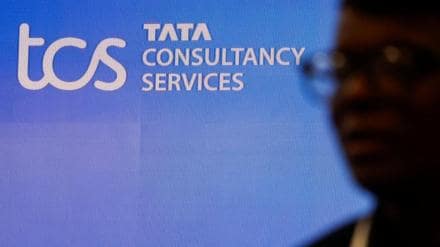Despite missing Street estimates on revenue and net profit, the analyst commentary on TCS’s performance has been positive on the back of early signs of revival of discretionary spending and the firm’s robust order book.
Samir Seksaria, chief financial officer of TCS, in an interview with Urvi Malvania and Ayanti Bera, talked about operational efficiencies, emerging market growth, and client trends favouring projects with quicker returns. He also said that any proposed changes in H-1B visa norms like raising minimum salaries and levying an annual visa maintenance charge will have minimal impact on TCS. Excerpts:
Are IT companies out of the woods, given signs of discretionary spending revival and policy clarity in the US?
It’s premature to say the IT sector, or even TCS, is entirely out of the woods. While we’ve observed early signs of revival, unforeseen geopolitical or macroeconomic factors could disrupt discretionary spending. These factors remain critical and need constant monitoring.
What kinds of operational efficiencies helped TCS improve margins in Q3?
Margins were driven by three key levers: productivity, utilisation, and workforce composition (pyramid structure). Utilisation involved optimising the existing resource pool by making trainees billable and enhancing bench efficiency. With over 11,000 employees added in Q1 and Q2, TCS optimised this capacity in Q3. Productivity was enhanced by streamlining processes and leveraging tools like AI/GenAI to perform tasks more efficiently with fewer resources. The pyramid structure, which balances the workforce mix across trainees, juniors, and seniors, helped optimise cost per employee, directly supporting margins.
How are AI projects shaping returns?
It’s still early days to quantify returns on AI initiatives. These engagements are currently small-scale and focused on specific use cases that drive productivity and efficiency. While they don’t yet contribute significantly to our $7.5-billion quarterly revenue, the projects now entering production are increasingly complex, signaling a shift towards greater adoption.
Are cost-optimisation deals still the primary focus for clients?
The overall pipeline reflects a mix of cost optimisation and business transformation. However, the current emphasis leans towards cost optimisation, primarily through vendor consolidation. Clients aim to enhance efficiency in existing operations while exploring opportunities in emerging technologies. On the transformation front, technology modernisation, such as cloud migration and ERP transformations like SAP HANA, continues to lead the way. Other significant themes include security and compliance, which involve building resilience against risks, and operating model transformation, which focuses on evolving how businesses function. Across the board, clients are prioritising projects with faster RoI over long-term transformational initiatives.
What was the margin impact of promotion-linked salary hikes?
While we don’t disclose specifics, over 100,000 employees received promotions in the past year. Despite these increments, cost optimisation measures have offset impacts. Efficiencies in headcount and productivity contributed positively to margins. Additionally, exchange rate dynamics influenced the reported numbers.
Beyond BSNL, what are the growth drivers in the domestic market?
BSNL’s contribution was flat this quarter. However, emerging markets, excluding North America, Europe, and the UK, saw 5% sequential growth, with India, MEA, and LATAM leading the charge. The tech stack developed for BSNL has garnered global interest due to its complexity and scalability. This opens opportunities in India, developing nations, and even developed markets like the US. We’re exploring these avenues to expand further.
What are your capex priorities?
Our capex is focused on physical and technology infrastructure. On the physical infrastructure side, we are adding capacity through a mix of owned and leased properties, which allows us to maintain flexibility while hedging against inflation. On the technology side, our investments are geared towards data centres, hardware, and software. For instance, we’ve acquired land in Bengaluru for a three- to four-year expansion plan and added over 10,000 seats in the past quarter, with a total of 30,000 seats added last year. We also began operations in Coimbatore.
How proposed H-1B regulation changes may impact TCS?
The proposed changes will have a minimal impact. Over 50% of our workforce in the US comprises residents, green card holders, or citizens. Additionally, we already adhere to prevailing wage norms. While compliance might marginally increase costs, our low dependency on non-resident talent mitigates the overall impact.
